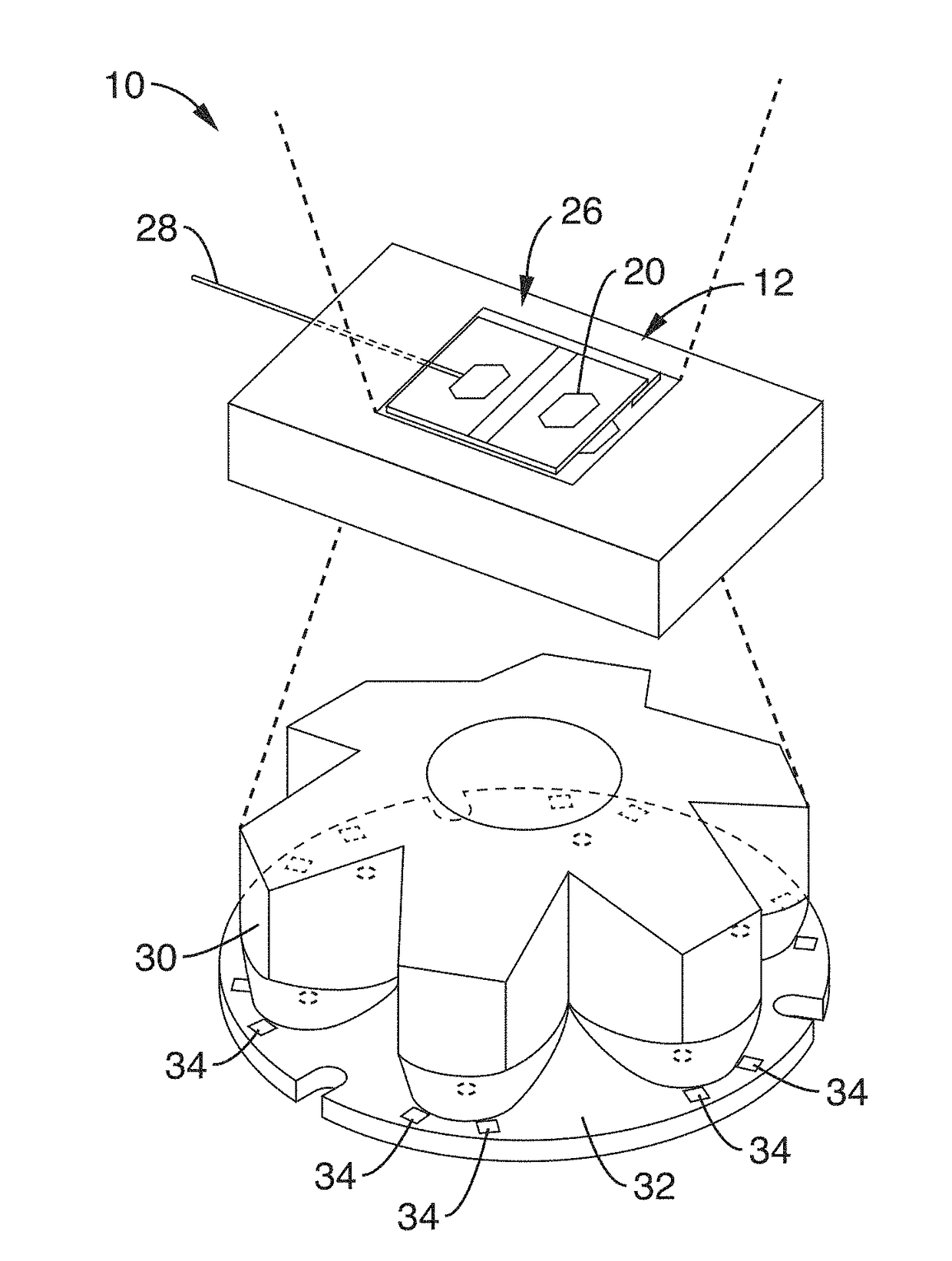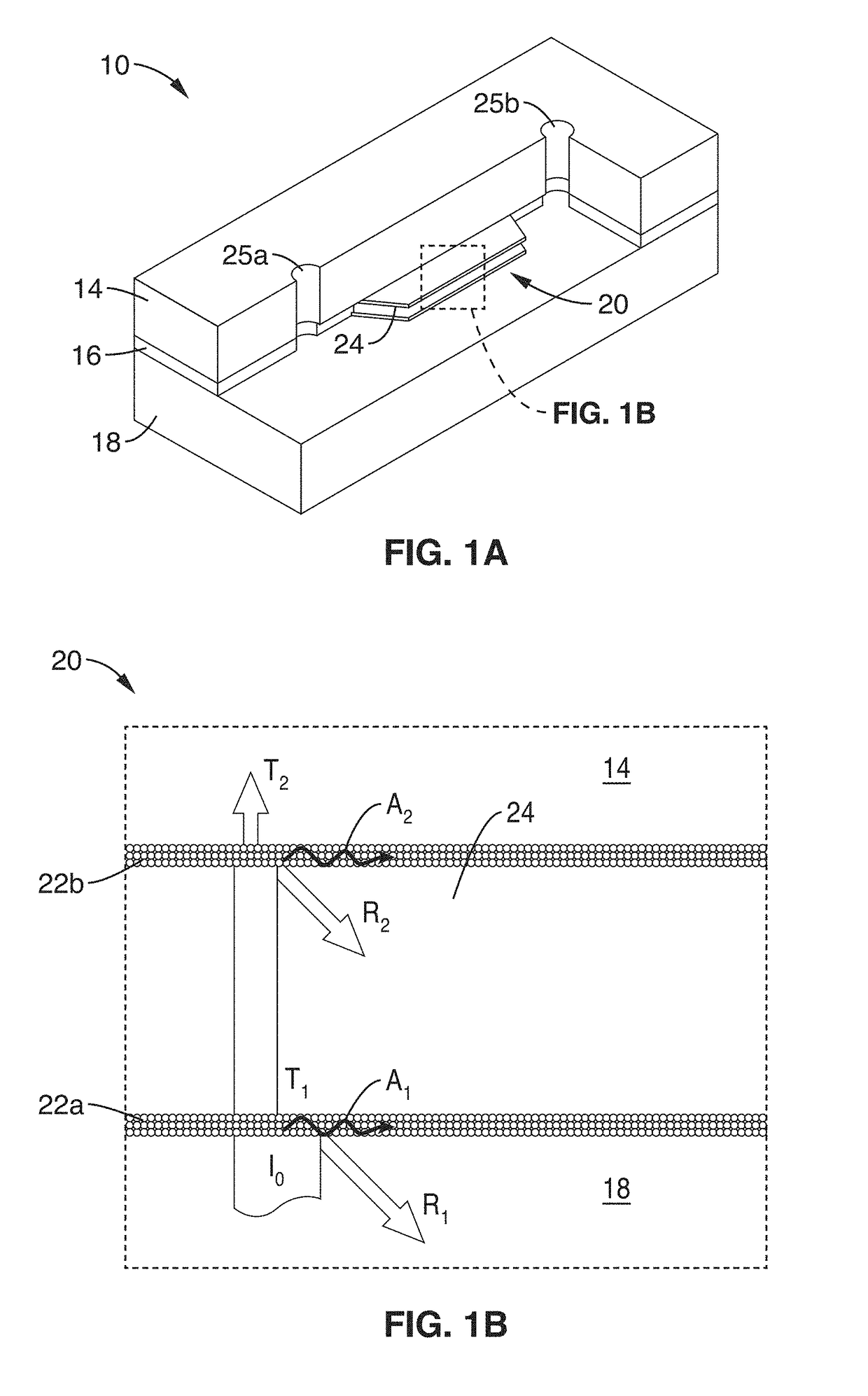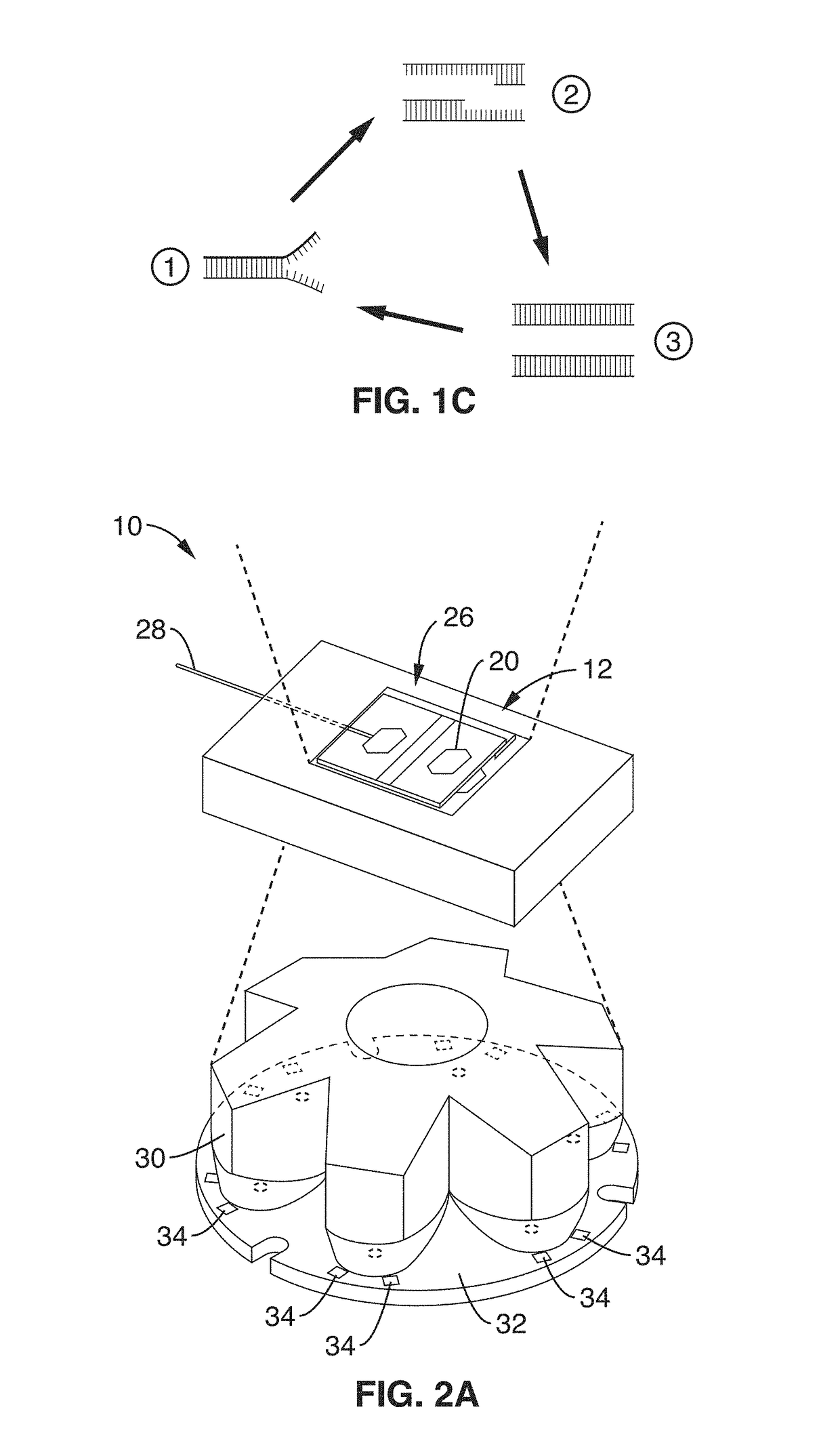Optical cavity PCR
- Summary
- Abstract
- Description
- Claims
- Application Information
AI Technical Summary
Benefits of technology
Problems solved by technology
Method used
Image
Examples
Embodiment Construction
[0032]The embodiments detailed below are directed to an optical cavity for heating a PCR mixture or like substance (Optical Cavity PCR). In the typical PCR sensing process, the PCR mixture generally goes through a plurality of heating and cooling cycles to affect the PCR reaction. Thus, rapid and uniform heating of the target sample (e.g. PCR mixture) is highly beneficial to POC testing. While the embodiments detailed below are directed to PCR-based sensing, it is appreciated that the optical cavity of the present description may be incorporated for use with any process where rapid and uniform heating of a sample is desired.
[0033]1. Optical Cavity PCR Configuration
[0034]FIG. 1A shows a perspective view of an embodiment of a PCR sensing device 10 comprising an optical cavity 20 for nucleic acid amplification through polymerase chain reaction (PCR) with top and cavity layers partially removed for clarity. FIG. 1B is a schematic side view of the optical cavity 20, showing light absorpt...
PUM
| Property | Measurement | Unit |
|---|---|---|
| Fraction | aaaaa | aaaaa |
| Fraction | aaaaa | aaaaa |
| Fraction | aaaaa | aaaaa |
Abstract
Description
Claims
Application Information
 Login to View More
Login to View More - R&D
- Intellectual Property
- Life Sciences
- Materials
- Tech Scout
- Unparalleled Data Quality
- Higher Quality Content
- 60% Fewer Hallucinations
Browse by: Latest US Patents, China's latest patents, Technical Efficacy Thesaurus, Application Domain, Technology Topic, Popular Technical Reports.
© 2025 PatSnap. All rights reserved.Legal|Privacy policy|Modern Slavery Act Transparency Statement|Sitemap|About US| Contact US: help@patsnap.com



